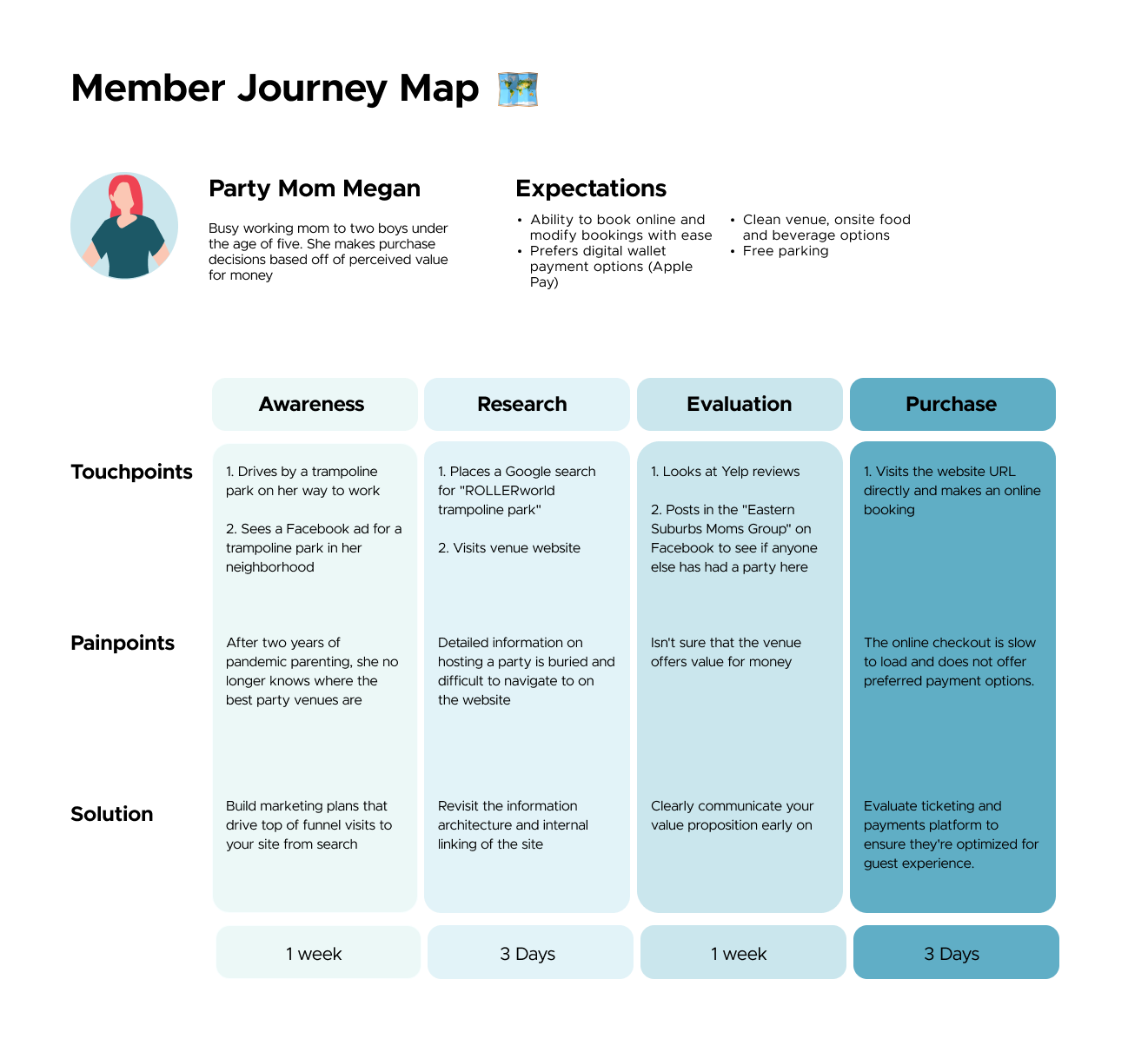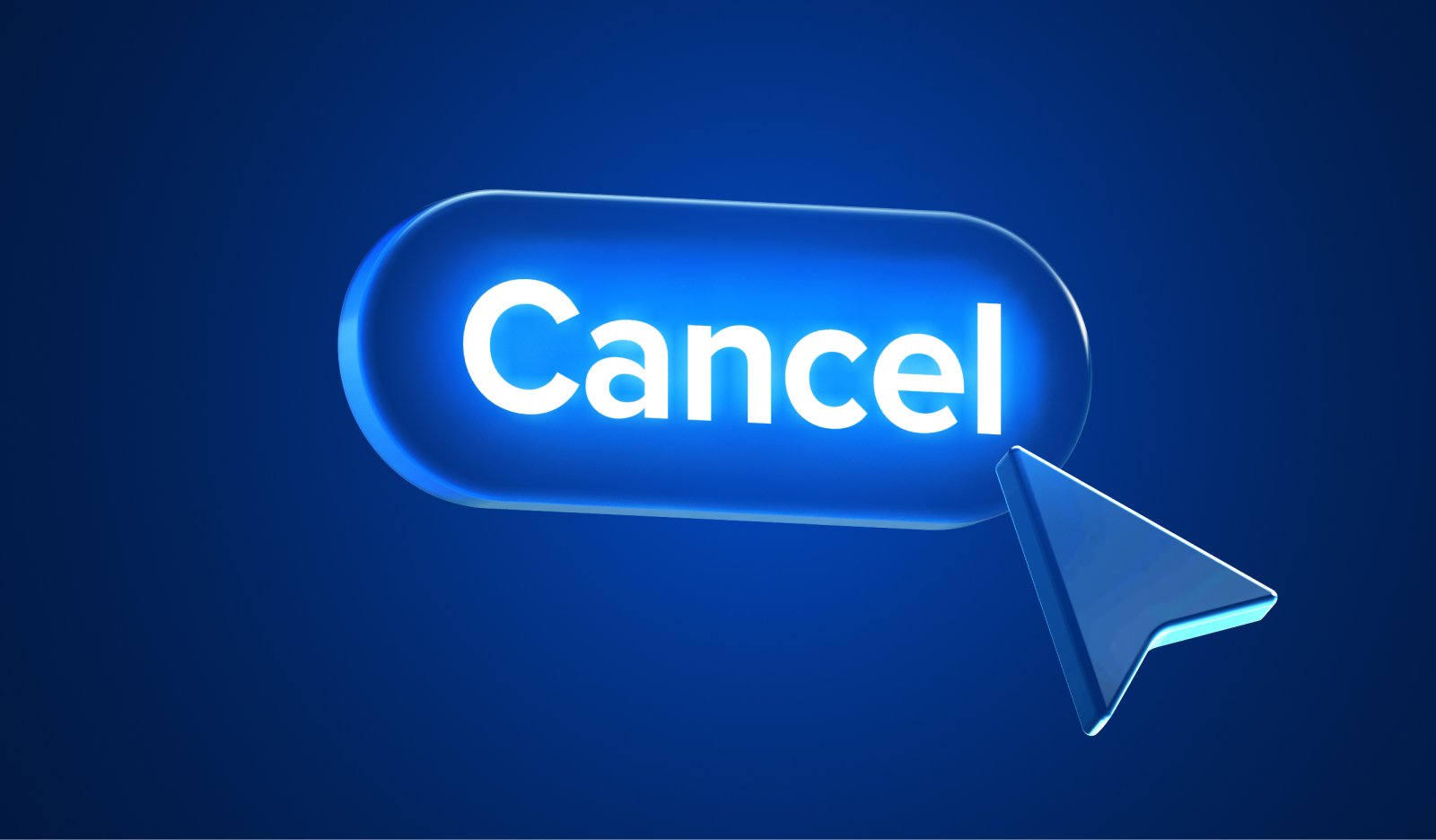How To Create An Effective Member Journey Map
.png?width=820&name=How%20to%20create%20an%20effective%20member%20journey%20map_Blog%20(1).png)
Knowing how prospective guests make purchasing decisions helps you acquire more of your target market quickly and at scale.
Once you understand how your guests engage with the businesses they spend their disposable time and money with, you can better tailor experiences that meet their needs and desires. And once you’ve tapped into what makes an experience great for them, you’ll be able to turn guests into loyal, repeat visitors who help grow your business. But easier said than done, right?
We recommend starting with a subsegment of your audience – the ones who are already most loyal to your business – your members.They tend to visit more, spend more, and tell other prospective guests what they love about your venue.
So starting by understanding what makes a guest become a guest in the first place, then upgrade to become a member, and then a fan who tells their friends and family to become a guest or member has significant value to your business.
So, how do you make sense of that process? One way is by developing member journey maps.
What is a member journey map?
A member journey map is a visual representation of all of the touchpoints guests have with your business – from the first interaction to becoming a superfan for life!
Mapping starts with understanding how guests first became aware of your business. Did they find you through social media? A Google search? Or a word-of-mouth referral?
Understanding how they came to be aware of your business helps you better understand their behavior. Then at some point after they’ve become familiar with your business, a prospective guest has likely begun to research you further.
This means they’ve gone to your website, visited you on-site, or sent an inquiry via phone or email. Exactly what were the touchpoints that led them to make an initial purchase and how much impact did they have? How long did it take between them becoming aware that your business exists and making a booking?
That’s what we’re here to find out. And then finally, what was the timeframe from purchasing tickets and experiencing your venue before becoming members and hopefully reaching the loyal member stage!
The 5 stages of a typical member journey
Generally speaking there are five stages (many of which we’ve already mentioned!) that a guest or member will take when they consider making a booking. These include:
1. Awareness
This is where a prospective guest or member becomes aware of your venue for the first time.
2. Research
After noticing your venue, a prospective guest searches for your venue to find more information about what you offer.
3. Evaluate
Using public reviews, your website, and social media, guests and members decide if your venue or offering is better than other similar venues and if they'd like to make a booking.
4. Purchase
Finally, they decide whether to book with your venue or a competitor’s based on their research.
5. Experience
After making a booking, guests post reviews or refer other people to your venue so that the guest or member journey cycle continues.

Benefits of member journey mapping
1. Improve your marketing ROI
Once you have a better handle on where your guests first become aware of you and the steps they take to learn more about you, you’ll know where to focus your efforts.
For example, if your guests and members are spending lots of time on social media, you can start to direct more resources towards the channels where your target audience is most active and engaged.
2. Identify gaps in guest service or member communications
A member journey map helps you more easily identify service gaps in your marketing and sales programs.
For example, if you don’t have an easy and instant way for prospective guests or members to communicate with you from the website, it may cause them to look elsewhere. Bummer, right?
In this example, you may decide to add a chat function or ‘click to call’ from mobile that makes it easier for your target market to get in touch.
3. Create a frictionless guest experience
Another benefit of member journey mapping is having insight into where your guests may want more touch points with your business.
Remember, a touch point is any interaction that they may have with your venue, like a public review, social post or on your website.
If you understand how guests are navigating the sales journey with the use of touch points, you can better determine how to make the overall experience smoother for them.
For example, if they went to make a booking but the online checkout was slow to load, difficult to navigate and didn’t offer multiple payment options, they may have been inclined to abandon the booking altogether or may be less likely to return.
Being armed with this information helps you better improve your guest and member experience with better service – ultimately leading to positive engagement in the future.
How to create a member journey map
If you’ve read this far you know member journey maps are a great tool that help understand your most valuable guests and grow your business. Now, we’ll show you how to create one for yourself:
1. Build buyer personas
Buyer personas represent your ideal customer and are created in the form of a fictional profile that summarizes key facts, including potential likes, dislikes and demographics such as age or location.
You’ll likely be targeting different personas, so try creating several to help you better target your different member types.
2. Identify guest touchpoints and actions
Now that you’ve got your personas and ideal member profiles in hand, go back and work out all of the touchpoints they are having with your business and, most importantly, the actions they take at each stage of their journey.
Once guests come to your website, do they make inquiries or make bookings, all with minimal interaction with support staff?
3. Analyze the journey
Note all the positive interactions at each touchpoint and, even more importantly, any negative or friction points.
If you’re getting lots of inquiries at the Evaluate stage but not so many bookings, then maybe it’s time to review your pricing or simplify some of your offerings.
4. Take business action
Now that you have more insight, keep doing the things that are working, but always see if you can do more.
For example, if a particular channel is bringing in a steady stream of new members, see if you can amplify your marketing there. And more importantly, start to address any friction points or negative experiences you might have found at each stage.
Member journey map best practices
1. Go on the journey yourself
To better understand what your members go through, make sure you are regularly testing and experiencing touchpoints – from upgrading from a regular admission ticket through to experiencing attractions and engaging with support staff.
2. Be open to change
Your member journey maps are likely to need to change over time as the needs and pain points of guests and customers continue to evolve.
Yet, despite the need to update them, member journey maps are a valuable resource to understand the nuances of your target audience and help your team stay customer-centric in their service delivery.
With regular updates and enhancements to your business, your venue can provide more meaningful engagement with your guests, deliver experiences that bring happiness and joy and continue to grow.
3. Reduce friction in the guest experience
In this digital age visitors to your website will expect a certain level of usability to complete transactions, regardless of how exciting your offer might be, so devote as many resources as you can to improving this one and you’ll potentially see improvements in your online conversions.
While many online checkouts might appear to have similar functionality, in reality not all operate the same. For example, if guests experience a poor design and user interface it could reduce the number of tickets that get sold online.
ROLLER’s ticketing and online checkout makes it easy to sell and manage tickets online, delivering a better guest experience and reducing friction once your members are ready to buy.
4. Better understand your members using a CRM
Using a CRM (Customer Relationship Manager software) can help you get a clear, unified view of members.
ROLLER’s CRM functionality lets you track member activity at key stages of the member journey and helps you categorize members based on spend, visits, product purchase and other data points.
This not only helps you to refine your buyer personas and target audiences but helps you to create much more effective and personalized marketing campaigns through segmentation.
Read this next: Point of Sale (POS) Marketing: 7 Tested Ways To Increase Sales
5. Collect and measure member feedback
Direct member feedback can deliver some of the best insights into your members journey and may hold the key in explaining any friction points along the way to becoming loyal members.
And if you’ve previously only gathered feedback in traditional ways, like emailed surveys or in-person Q&As, embracing new digital tools can make it much easier for members to engage and share experiences.
ROLLER’s Guest Experience Score is a free sentiment analysis tool that helps owners and operators collect, analyze and action member feedback at scale, with just the click of a button, helping your team to action feedback quickly and do more of what’s working well.
Better understanding your members is key for greater connection and conversions
Going on a journey with your members is going to be one of the most effective ways to really understand why they have chosen, or at times maybe not chosen, to continue to spend time and money with your business.
And as we’ve discussed, because your members are already your most engaged guests, taking the time to work out how you can continually enhance the member experience at every touchpoint along the way can do wonders for ongoing member engagement and future revenue.
So start looking for new opportunities to improve engagement and reduce friction at each stage of the member journey, and with the right tools and commitment, you and your team can map your way to more and more loyal members each month!
Enhance your guest experience
Get free education, tips and inspiration to help you run a successful venue.


